Experimental Investigation of Sand Subjected to High Stress Levels in Wet and Dry Conditions
Abstract
1. Introduction
2. Static Quasi-Oedometric Test
2.1. Test Principle
2.2. Setup Description and Plug Modification
2.3. Strain Gages Signals Processing
2.4. LVDT Calibration
- : Axial displacement registered by the LVDTs during a normal test on sand specimen.
- : Axial displacement measured by the LVDTs during the calibration test.
- : Axial displacement of the sand specimen only during the test.
2.5. Setup Validation on Sand Material
3. Material Description, Test Preparation, and Validation
- The confinement cell is placed on a steel flat support, and a dummy steel sample with 37.5 mm height is slipped inside it.
- The steel plug is introduced inside the cell from the top, then fixed at a distance equal to 7.5 mm by means of a base equipped with six bolts (Figure 10a).
- The whole set is inversely rotated, and both the flat support and the dummy sample are removed from the top.
- The cell is filled by 30 mm of sand material in three layers using a funnel and small spoon. Each layer of 10 mm height is compacted using a tamper. This step will also reduce the effect of initial density on the mechanical response (Figure 10b).
- Finally, the upper plug is slipped inside the cell for the remaining height (=7.5 mm), and then the upper base is installed and screwed to guarantee the stability of the system (Figure 10c).
4. Quasi-Oedometric Test Results on Sand
4.1. Effect of Particle Size Distribution
4.2. Effect of Grain Nature
4.3. Effect of Water Saturation Degree
5. Post-Mortem Analysis X-ray Tomography
6. Results and Discussions
7. Summary and Conclusions
Author Contributions
Funding
Institutional Review Board Statement
Informed Consent Statement
Data Availability Statement
Acknowledgments
Conflicts of Interest
References
- Yamamuro, J.A.; Bopp, P.A.; Lade, P.V. One-dimensional compression of sands at high pressures. J. Geotech. Eng. 1996, 122, 147–154. [Google Scholar] [CrossRef]
- Ambrosini, R.D.; Luccioni, B.M. Craters produced by explosions on the soil surface. J. Appl. Mech. Trans. ASME 2006, 73, 890–900. [Google Scholar] [CrossRef]
- Nakata, Y.; Hyodo, M.; Hyde, A.F.L.; Kato, Y.; Murata, H. Microscopic particle crushing of sand subjected to high pressure one-dimensional compression. Soils Found. 2001, 41, 69–82. [Google Scholar] [CrossRef]
- McDowell, G.R. On the yielding and plastic compression of sand. Soils Found. 2002, 42, 139–145. [Google Scholar] [CrossRef]
- Suescun-Florez, E.; Iskander, M.; Bless, S. Evolution of particle damage of sand during axial compression via arrested tests. Acta Geotech. 2020, 15, 95–112. [Google Scholar] [CrossRef]
- Xiao, Y.; Meng, M.; Daouadji, A.; Chen, Q.; Wu, Z.; Jiang, X. Effects of particle size on crushing and deformation behaviors of rockfill materials. Geosci. Front. 2020, 11, 375–388. [Google Scholar] [CrossRef]
- Li, M.; Zhang, J.; Zhou, N.; Huang, Y. Effect of particle size on the energy evolution of crushed waste rock in coal mines. Rock Mech. Rock Eng. 2017, 50, 1347–1354. [Google Scholar] [CrossRef]
- Indraratna, B.; Sun, Y.; Nimbalkar, S. Laboratory assessment of the role of particle size distribution on the deformation and degradation of ballast under cyclic loading. J. Geotech. Geoenviron. Eng. 2016, 142, 04016016. [Google Scholar] [CrossRef]
- Altuhafi, F.N.; Coop, M.R.; Georgiannou, V.N. Effect of particle shape on the mechanical behavior of natural sands. J. Geotech. Geoenviron. Eng. 2016, 142, 04016071. [Google Scholar] [CrossRef]
- Xiao, Y.; Long, L.; Evans, T.M.; Zhou, H.; Liu, H.; Stuedlein, A.W. Effect of particle shape on stress-dilatancy responses of medium-dense sands. J. Geotech. Geoenviron. Eng. 2019, 145, 1–15. [Google Scholar] [CrossRef]
- Zhao, B.; Wang, J.; Andò, E.; Viggiani, G.; Coop, M.R. Investigation of particle breakage under one-dimensional compression of sand using X-ray microtomography. Can. Geotech. J. 2020, 57, 754–762. [Google Scholar] [CrossRef]
- Altuhafi, F.N.; Coop, M.R. The effect of mode of loading on particle-scale damage. Soils Found. 2011, 51, 849. [Google Scholar] [CrossRef]
- Xiao, Y.; Liu, H.; Chen, Q.; Ma, Q.; Xiang, Y.; Zheng, Y. Particle breakage and deformation of carbonate sands with wide range of densities during compression loading process. Acta Geotech. 2017, 12, 1177–1184. [Google Scholar] [CrossRef]
- Luzzani, L.; Coop, M.R. On the relationship between particle breakage and the critical state of sands. Soils Found. 2002, 42, 71–82. [Google Scholar] [CrossRef]
- Shahnazari, H.; Rezvani, R. Effective parameters for the particle breakage of calcareous sands: An experimental study. Eng. Geol. 2013, 159, 98–105. [Google Scholar] [CrossRef]
- Miura, N.; Yamanouchi, T. Effect of water on the behavior of a quartz-rich sand under high stresses. Soils Found. 1975, 15, 23–34. [Google Scholar] [CrossRef]
- Wils, L.; Impe, P.V.; Haegeman, W. One-dimensional compression of a crushable sand in dry and wet conditions. In Proceedings of the third International Symposium on Geomechanics from Micro to Macro, Cambridge, UK, 1–3 September 2015; Taylor and Francis Group: London, UK, 2015. [Google Scholar]
- Ovalle, C. Role of particle breakage in primary and secondary compression of wet and dry sand. Géotechnique Lett. 2018, 8, 161–164. [Google Scholar] [CrossRef]
- Zhang, J.; Zhang, B. Fractal pattern of particle crushing of granular geomaterials during one-dimensional compression. Adv. Civ. Eng. 2018, 2018, 1–14. [Google Scholar] [CrossRef]
- Xiao, Y.; Yuan, Z.; Chu, J.; Liu, H.; Huang, J.; Luo, S.N.; Wang, S.; Lin, J. Particle breakage and energy dissipation of carbonate sands under quasi-static and dynamic compression. Acta Geotech. 2019, 14, 1741–1755. [Google Scholar] [CrossRef]
- Nanda, S.; Sivakumar, V.; Donohue, S.; Graham, S. Small-strain behavior and crushability of Ballyconnelly carbonate sand under monotonic and cyclic loading. Can. Geotech. J. 2018, 55, 979–987. [Google Scholar] [CrossRef]
- Gudehus, G. A visco-hypoplastic constitutive relation for soft soils. Soils Found. 2004, 44, 11–25. [Google Scholar] [CrossRef]
- Bauer, E. Hypoplastic modelling of moisture-sensitive weathered rockfill materials. Acta Geotech. 2009, 4, 261. [Google Scholar] [CrossRef]
- Burlion, N.; Pijaudier-Cabot, G.; Gatuingt, F.; Dahan, N. Concrete under high compaction: A new experimental method. In Proceedings of the Third Conference on Fracture Mechanics of Concrete Structures FRAMCOS-3, Gifu, Japan, 12–16 October 1998; AEDIFICATIO Pub.: Freiburg, Germany, 1998. [Google Scholar]
- Forquin, P.; Arias, A.; Zaera, R. An experimental method of measuring the confined compression strength of high-performance concretes to analyse their ballistic behaviour. Int. J. Solids Struct. 2006, 44, 4291–4317. [Google Scholar] [CrossRef][Green Version]
- Forquin, P.; Arias, A.; Zaera, R. Role of porosity in controlling the mechanical and impact behaviors of cement-based materials. Int. J. Impact Eng. 2008, 35, 133–146. [Google Scholar] [CrossRef]
- Forquin, P.; Gary, G.; Gatuingt., F. A testing technique for concrete under confinement at high rates of strain. Int. J. Impact Eng. 2008, 35, 425–446. [Google Scholar] [CrossRef]
- Forquin, P.; Safa, K.; Gary, G. Influence of free water on the quasi-static and dynamic strength of concrete in confined compression tests. Cem. Concr. Res. 2010, 40, 321–333. [Google Scholar] [CrossRef]
- Accary, A.; Malecot, Y.; Daudeville, L. Design and Evaluation of a Deformable Sensor for Interstitial Pore Pressure Measurement in Concrete under Very High Stress Level. Appl. Sci. 2019, 9, 2610. [Google Scholar] [CrossRef]
- Hibbitt, H.D.; Karlsson, B.I.; Sorensen, P. Inc. Abaqus Manuals; Version 6.12; Sorensen, P. Inc.: Culver City, CA, USA, 2000. [Google Scholar]
- Lee, I.L.; Coop, M.R. The intrinsic behaviour of a decomposed granite soil. Géotechnique 1995, 45, 117–130. [Google Scholar] [CrossRef]
- Huang, J.Y.; Hu, S.S.; Xu, S.L.; Luo, S.N. Fractal crushing of granular materials under confined compression at different strain rates. Int. J. Impact Eng. 2017, 106, 259–265. [Google Scholar] [CrossRef]
- Luo, H.; Lu, H.; Cooper, W.L.; Komanduri, R. Effect of mass density on the compressive behavior of dry sand under confinement at high strain rates. Exp. Mech. 2011, 51, 1499–1510. [Google Scholar] [CrossRef]
- Mesri, G.; Vardhanabhuti, B. Compression of granular materials. Can. Geotech. J. 2009, 46, 369–392. [Google Scholar] [CrossRef]
- Bauer, E. Constitutive modelling of wetting deformation of rockfill materials. Int. J. Civ. Eng. 2019, 17, 481–486. [Google Scholar] [CrossRef]
- Wang, X.Z.; Jiao, Y.Y.; Wang, R.; Hu, M.J.; Meng, Q.S.; Tan, F.Y. Engineering characteristics of the calcareous sand in Nansha Islands, South China Sea. Eng. Geol. 2011, 120, 40–47. [Google Scholar] [CrossRef]
- Luo, H.; Cooper, W.L.; Lu, H. Effects of particle size and moisture on the compressive behavior of dense Eglin sand under confinement at high strain rates. Int. J. Impact Eng. 2014, 65, 40–55. [Google Scholar] [CrossRef]
- Barr, A.D.; Clarke, S.D.; Petkovski, M.; Tyas, A.; Rigby, S.E.; Warren, J.; Kerr, S. Effects of strain rate and moisture content on the behaviour of sand under one-dimensional compression. Exp. Mech. 2016, 56, 1625–1639. [Google Scholar] [CrossRef]
- Martin, B.E.; Chen, W.; Song, B.; Akers, S.A. Moisture effects on the high strain-rate behavior of sand. Mech. Mater. 2009, 41, 786–798. [Google Scholar] [CrossRef]
- Poinard, C.; Piotrowska, E.; Malecot, Y.; Daudeville, L.; Landis, E.N. Compression triaxial behavior of concrete: The role of the mesostructure by analysis of X-ray tomographic images. Eur. J. Civ. Eng. 2012, 16, s115–s136. [Google Scholar] [CrossRef]
- Bésuelle, P.; Desrues, J.; Raynaud, S. Experimental characterization of the localization phenomenon inside a Vosges sandstone in a triaxial cell. Int. J. Rock Mech. Min. Sci. 2000, 37, 1223–1237. [Google Scholar] [CrossRef]
- Landis, E.N.; Zhang, T.; Nagy, E.N.; Nagy, G.; Franklin, W.R. Cracking, damage and fracture in four dimensions. Mater. Struct. 2007, 40, 357–364. [Google Scholar] [CrossRef]
- Watanabe, Y.; Lenoir, N.; Otani, J.; Nakai, T. Displacement in sand under triaxial compression by tracking soil particles on X-ray CT data. Soils Found. 2012, 52, 312–320. [Google Scholar] [CrossRef]
- Karatza, Z.; Andò, E.; Papanicolopulos, S.A.; Viggiani, G.; Ooi, J.Y. Effect of particle morphology and contacts on particle breakage in a granular assembly studied using X-ray tomography. Granul. Matter 2019, 21, 1–13. [Google Scholar] [CrossRef]
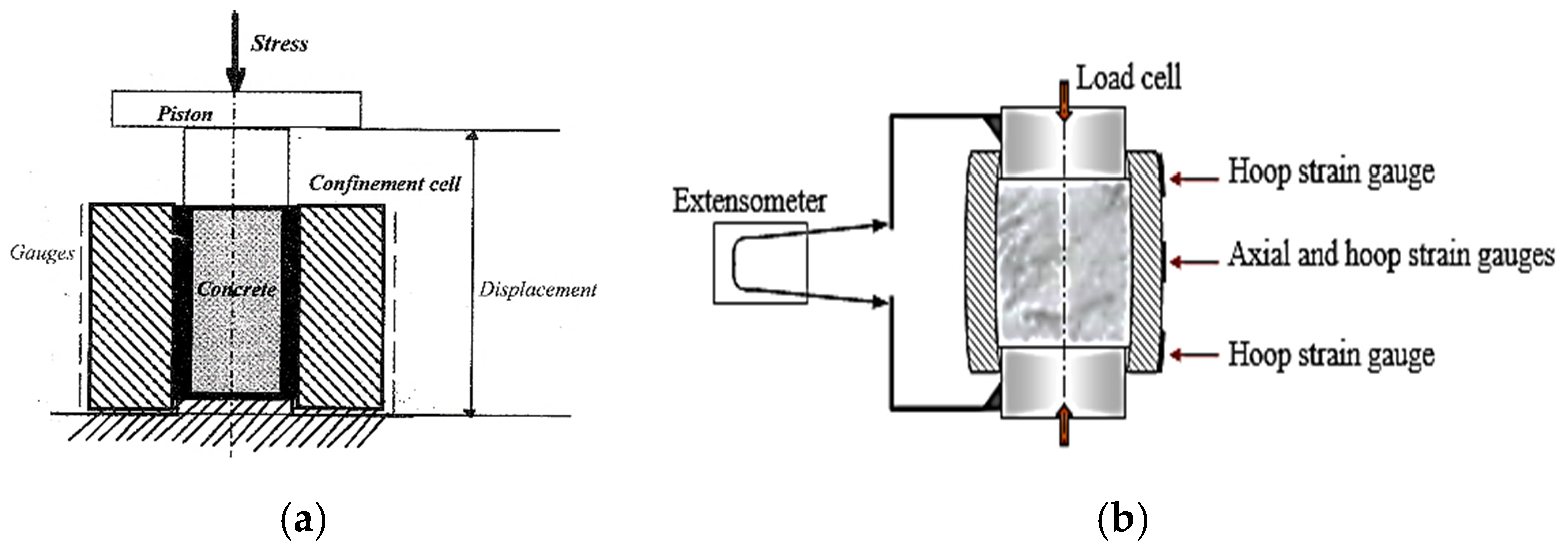
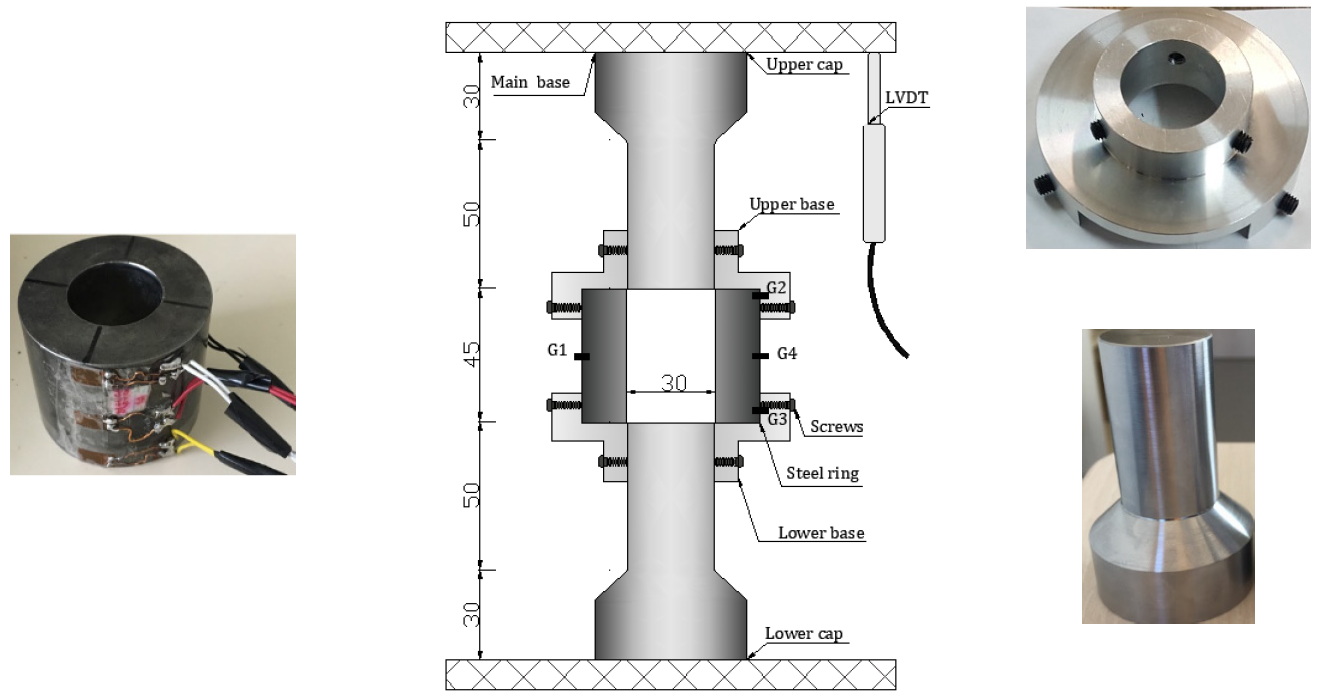
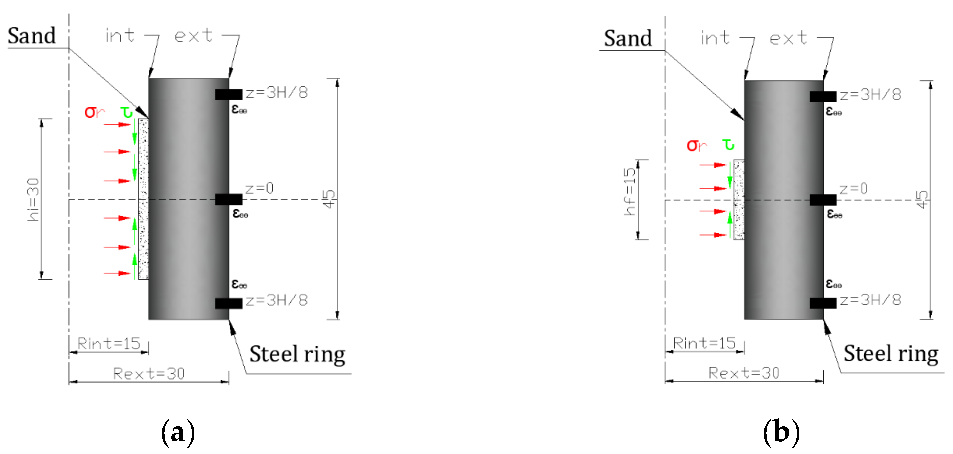
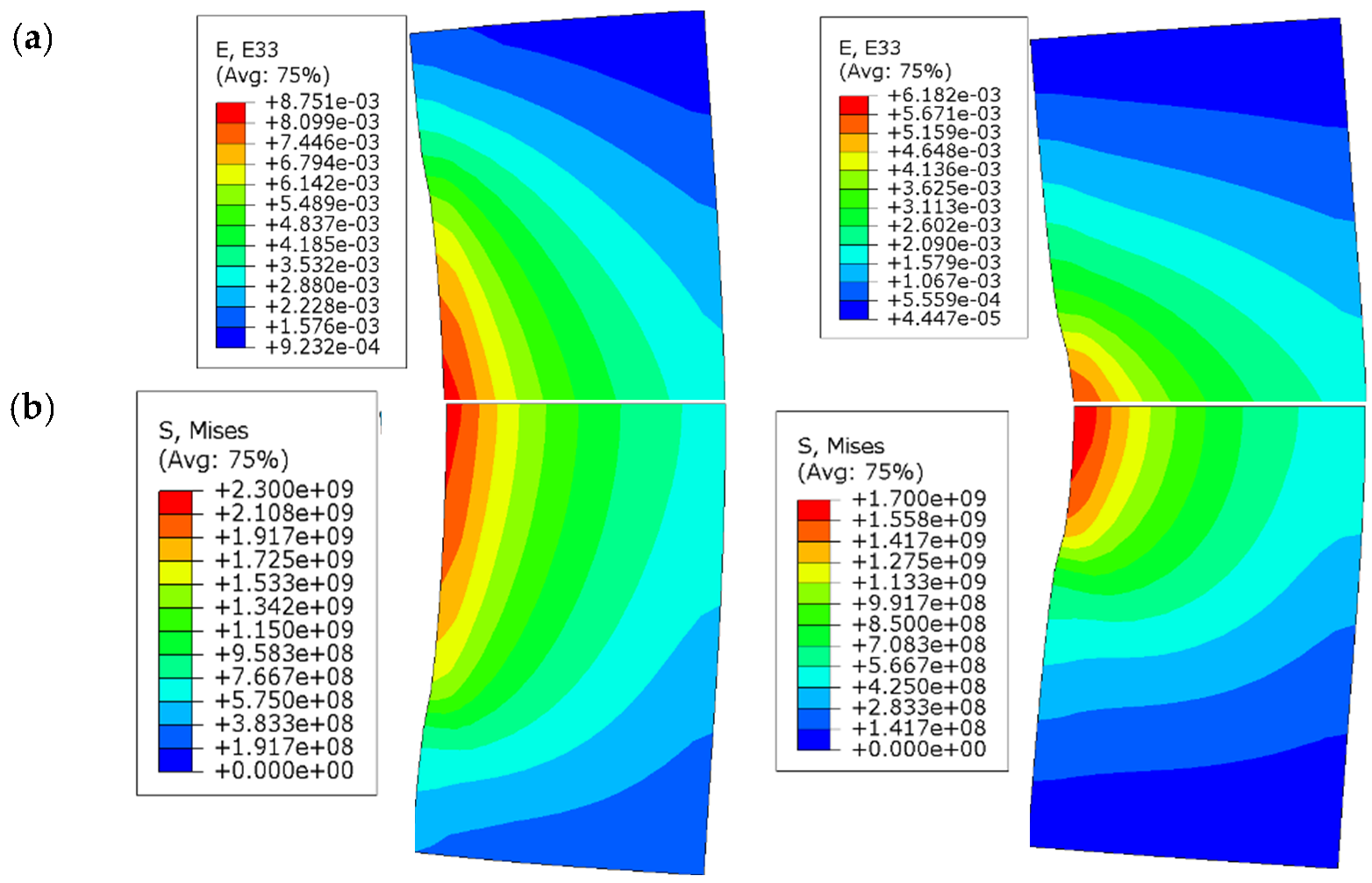
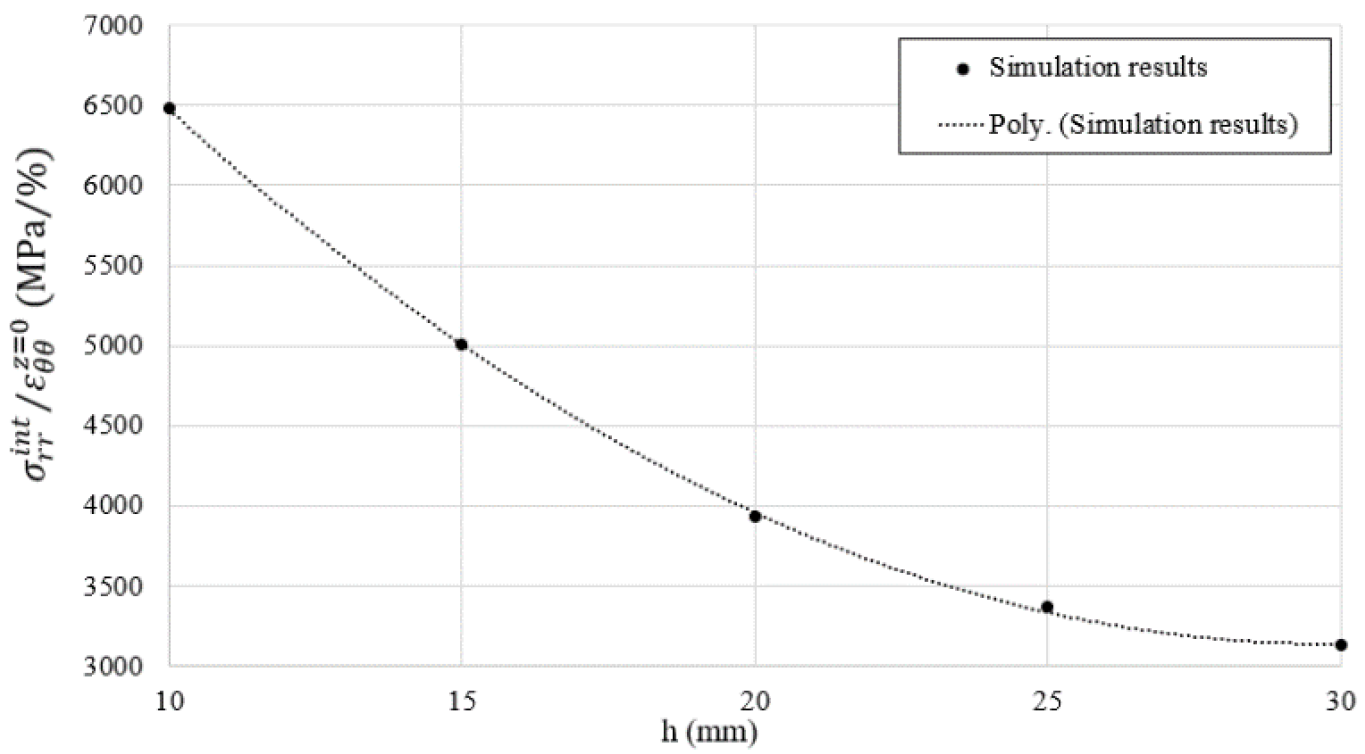
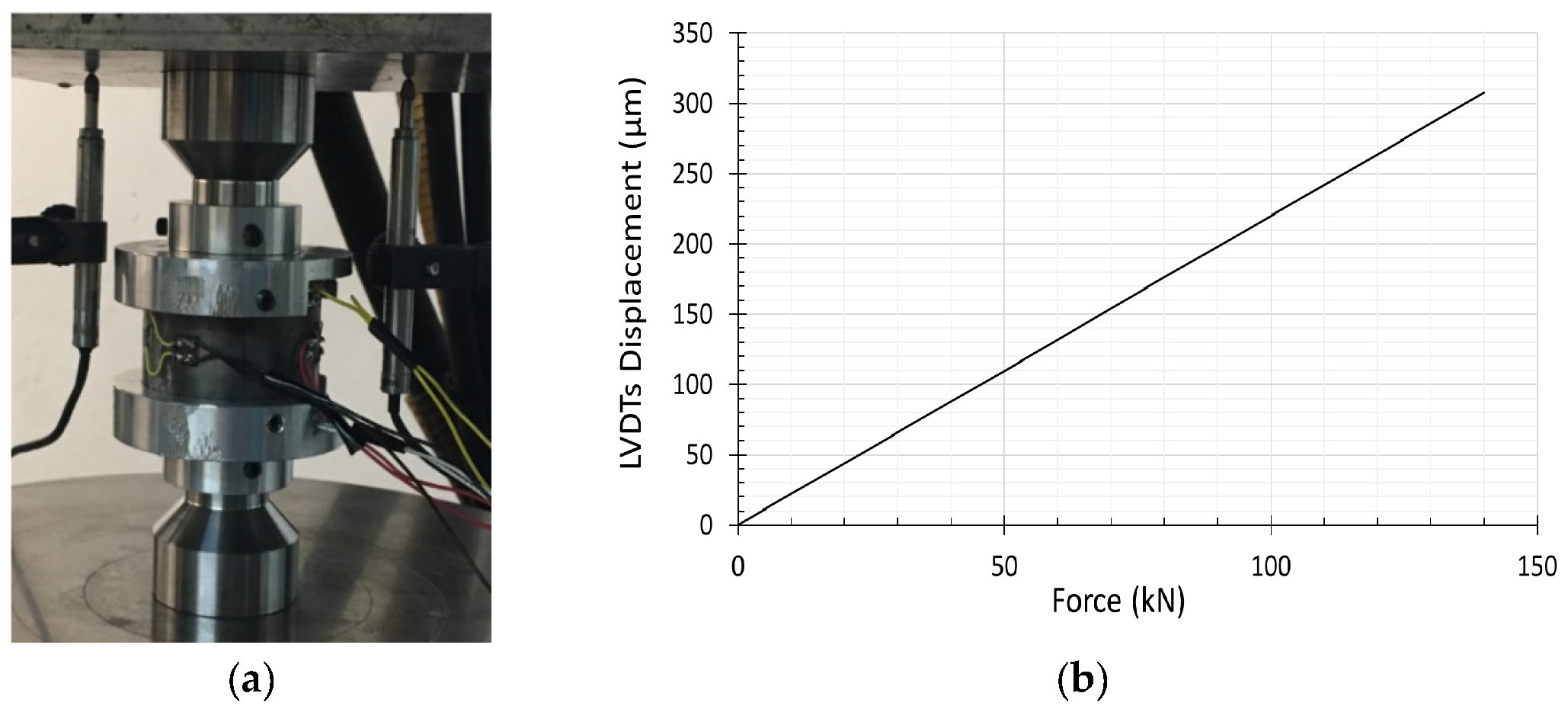
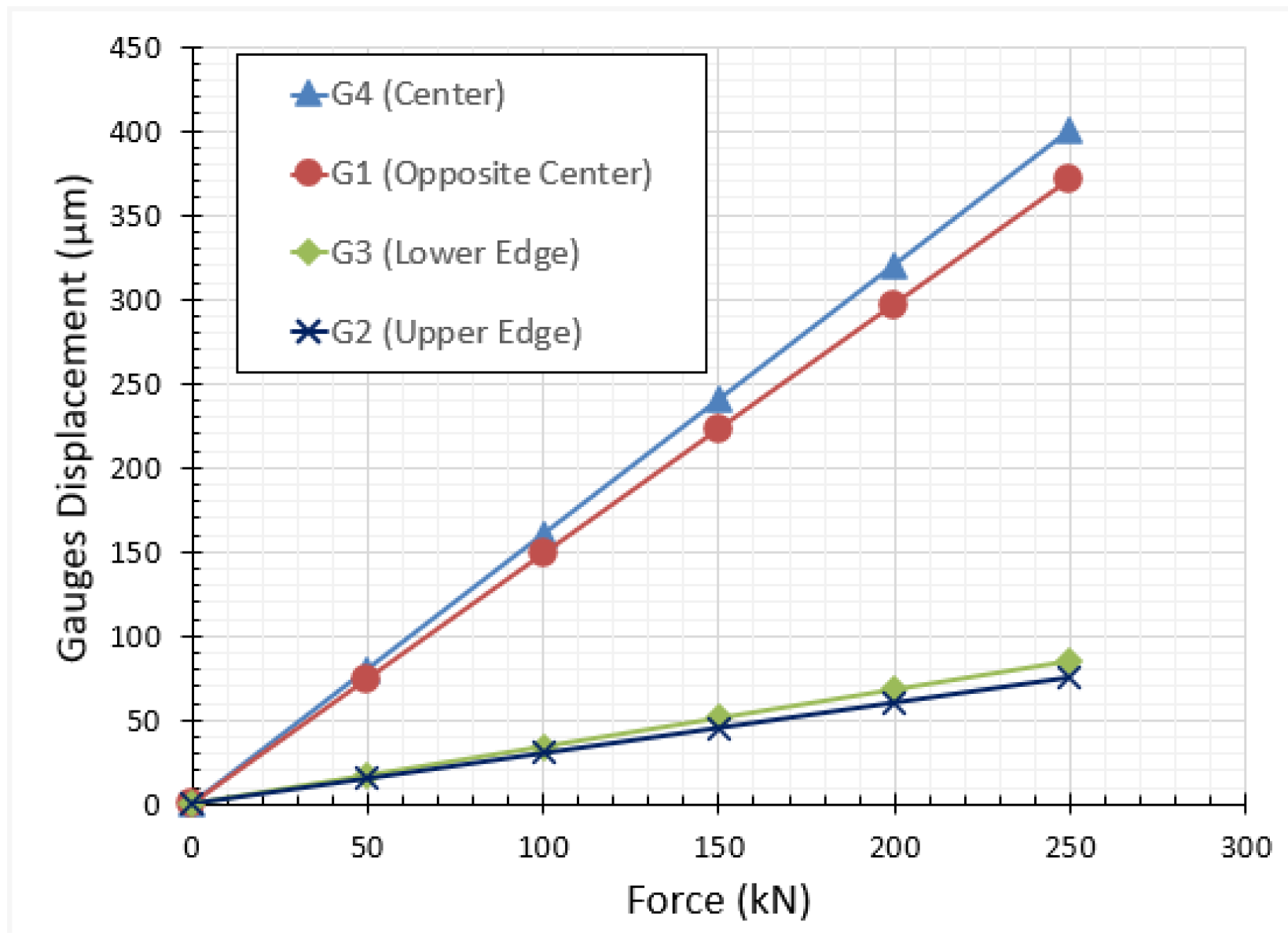
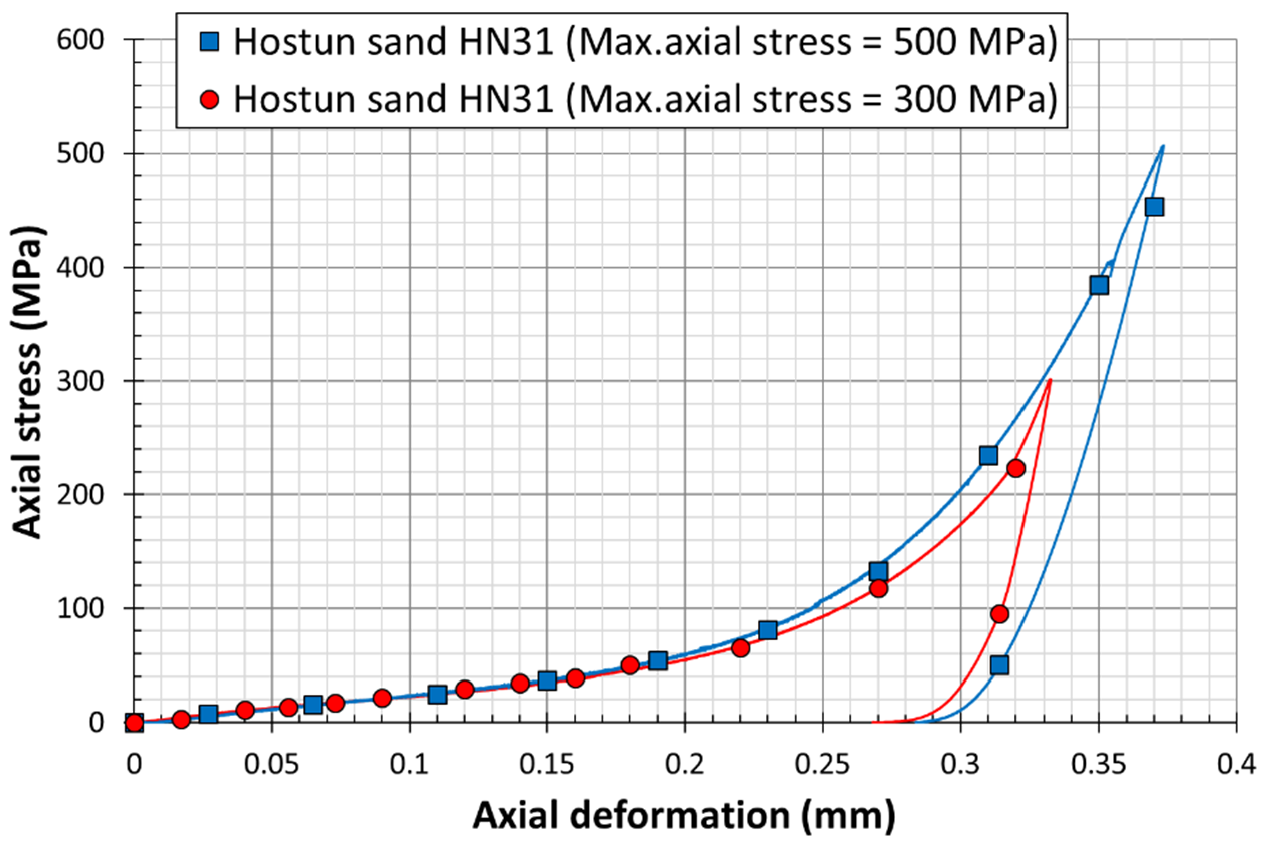

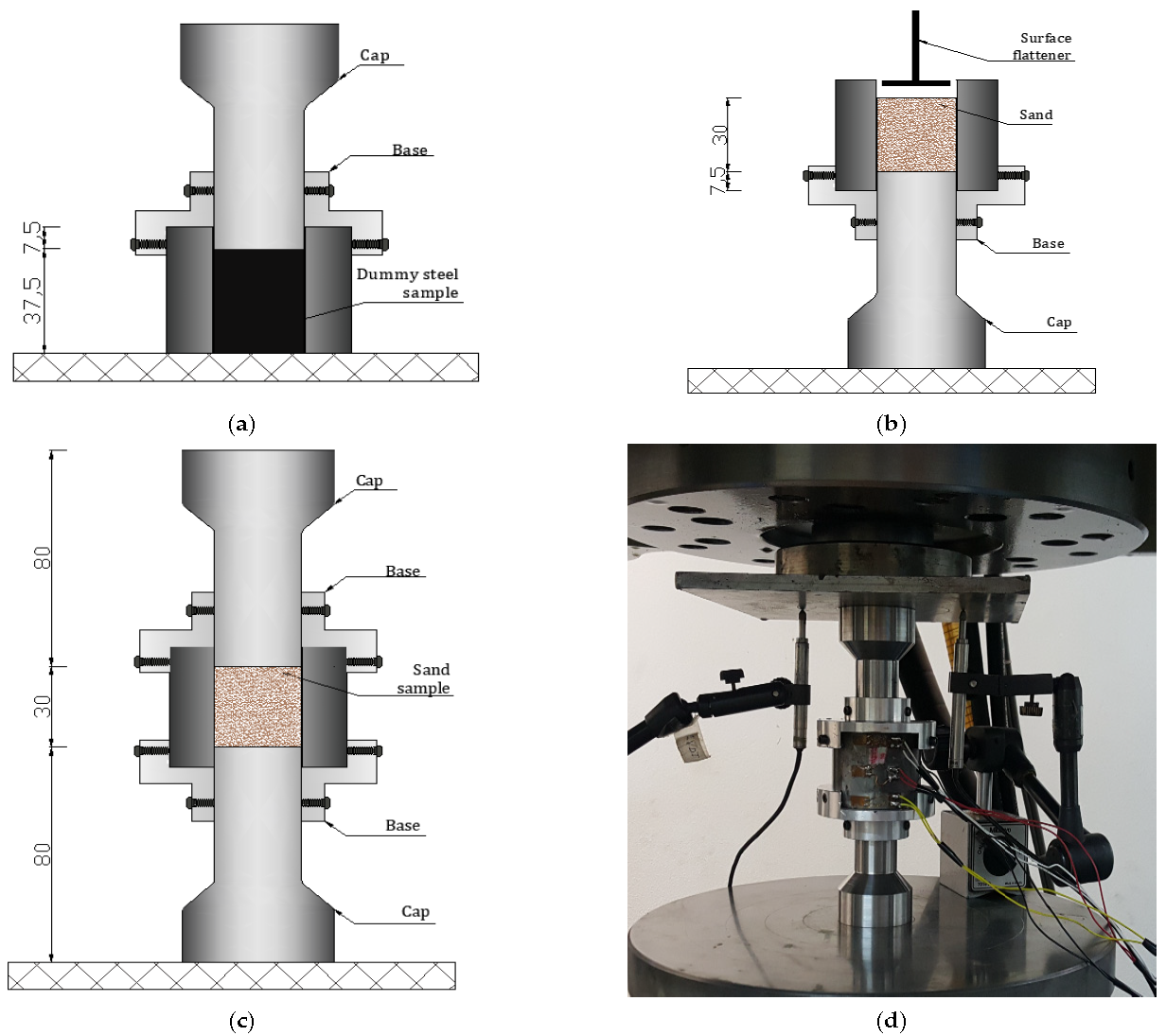
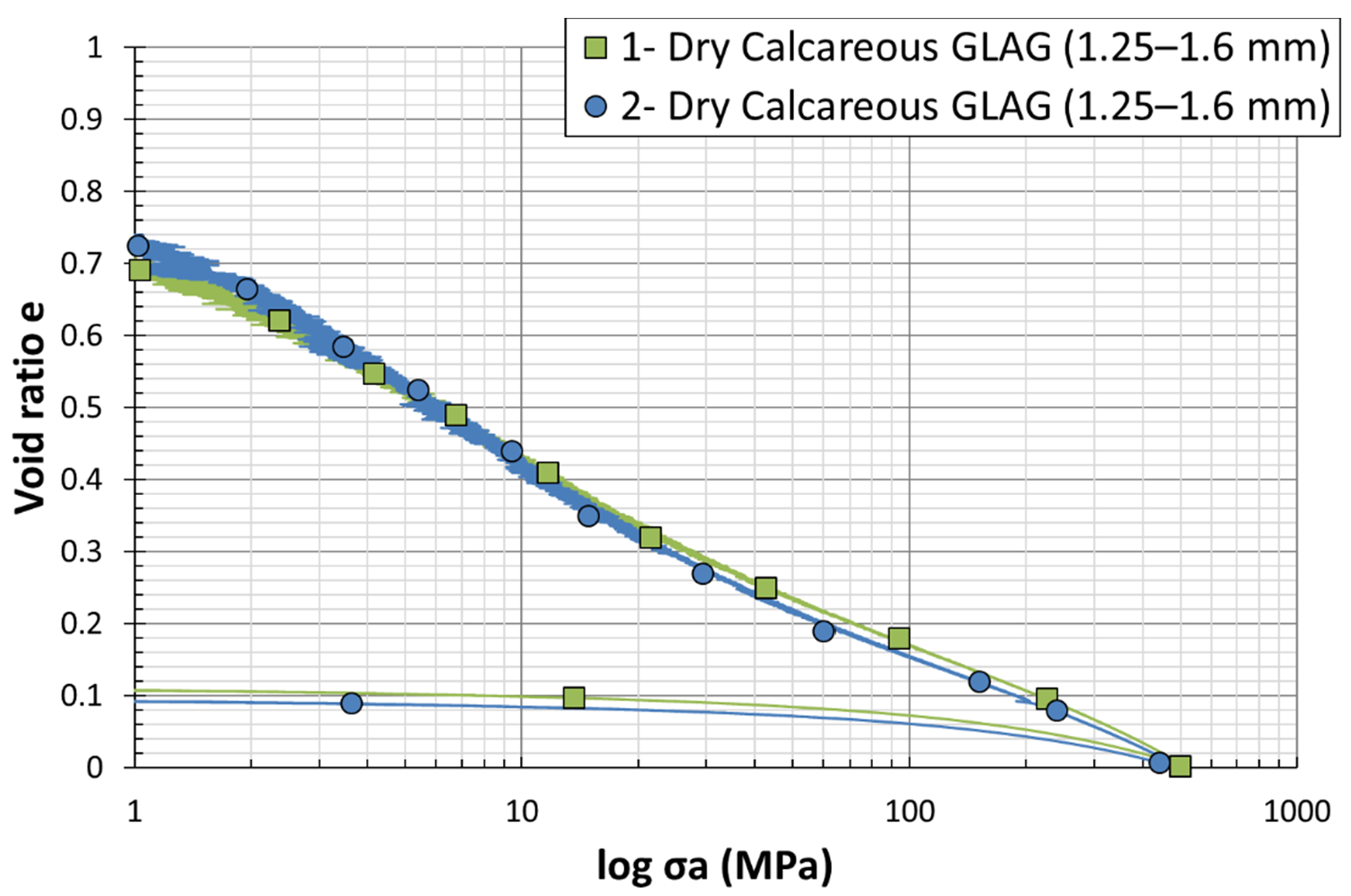
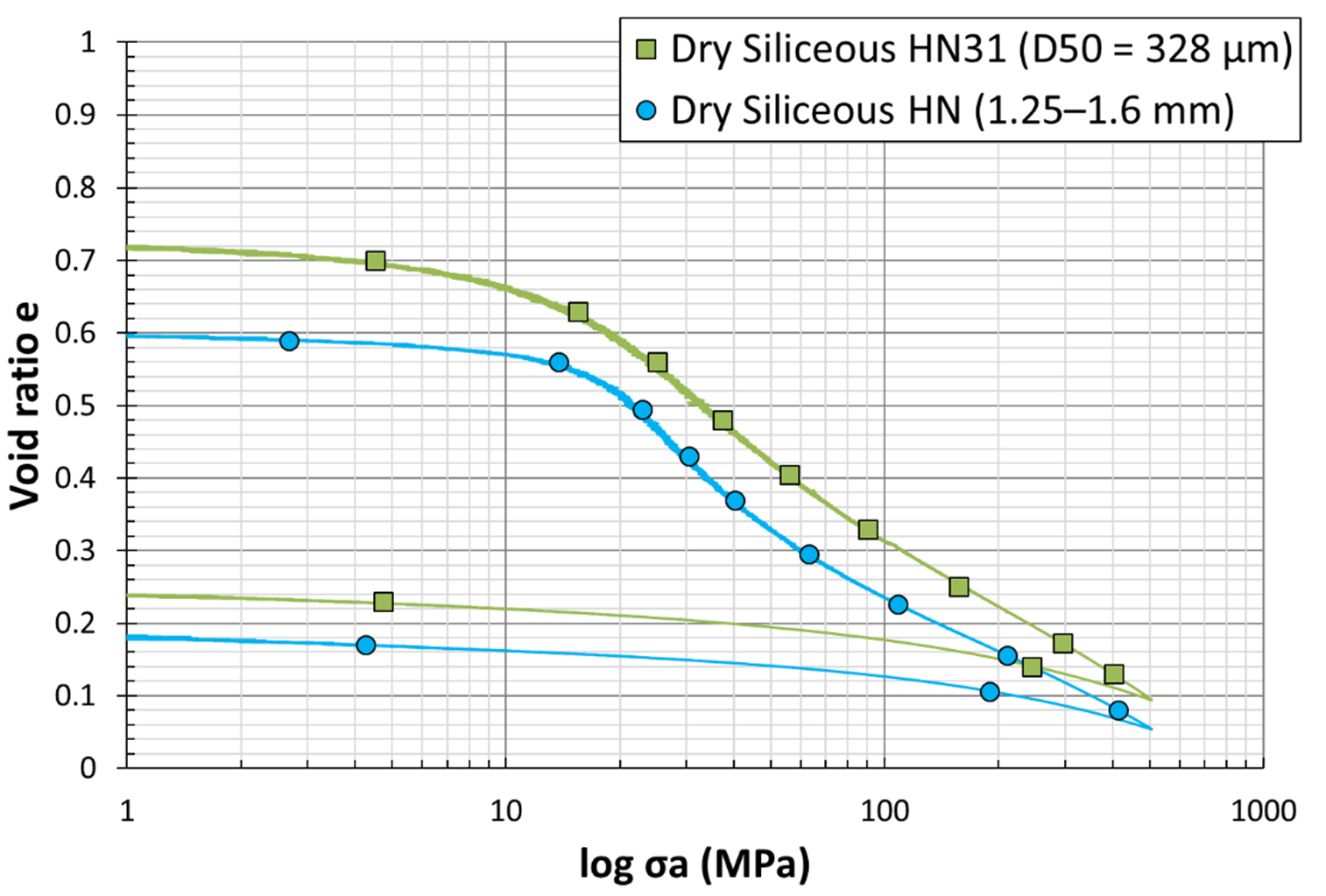

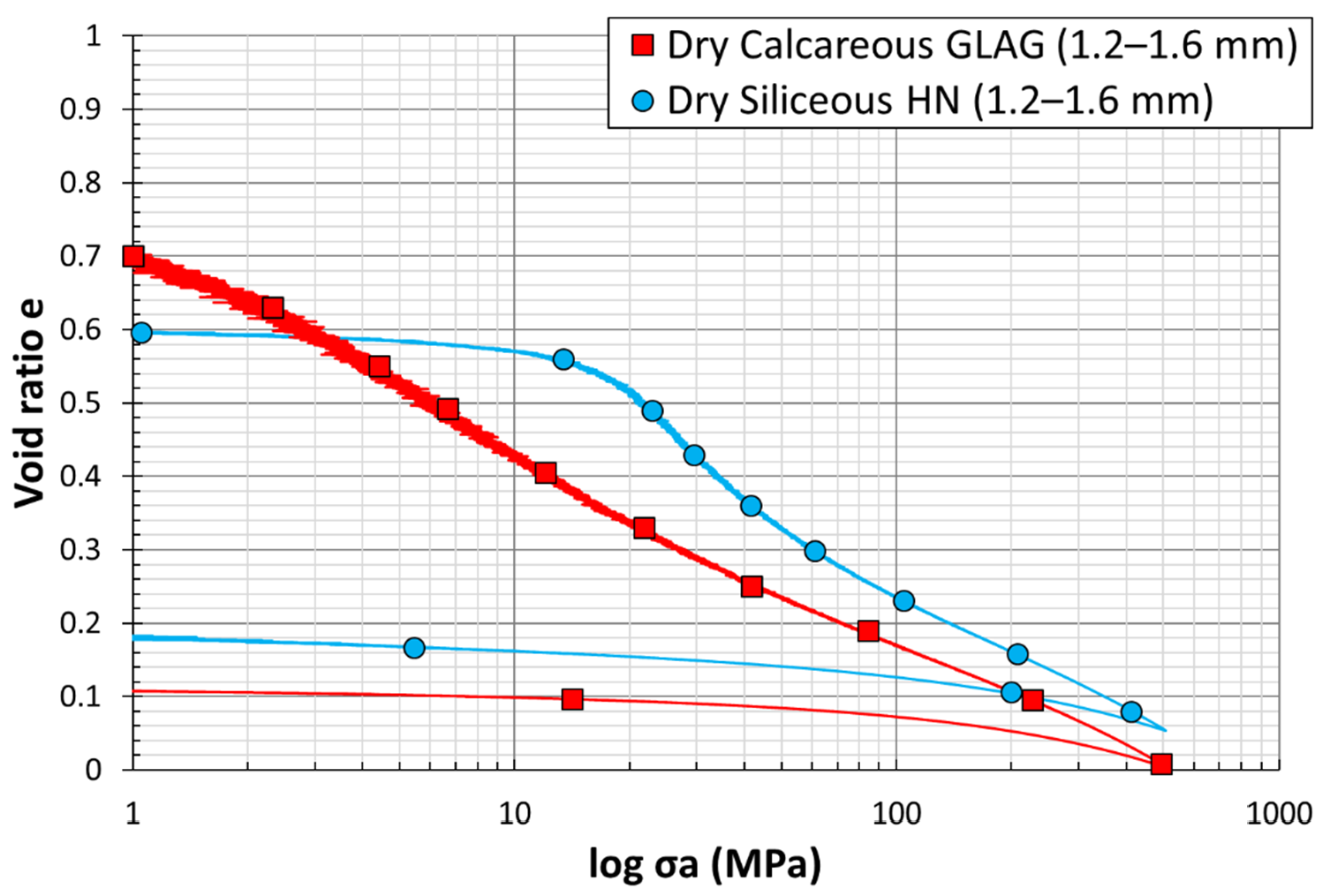

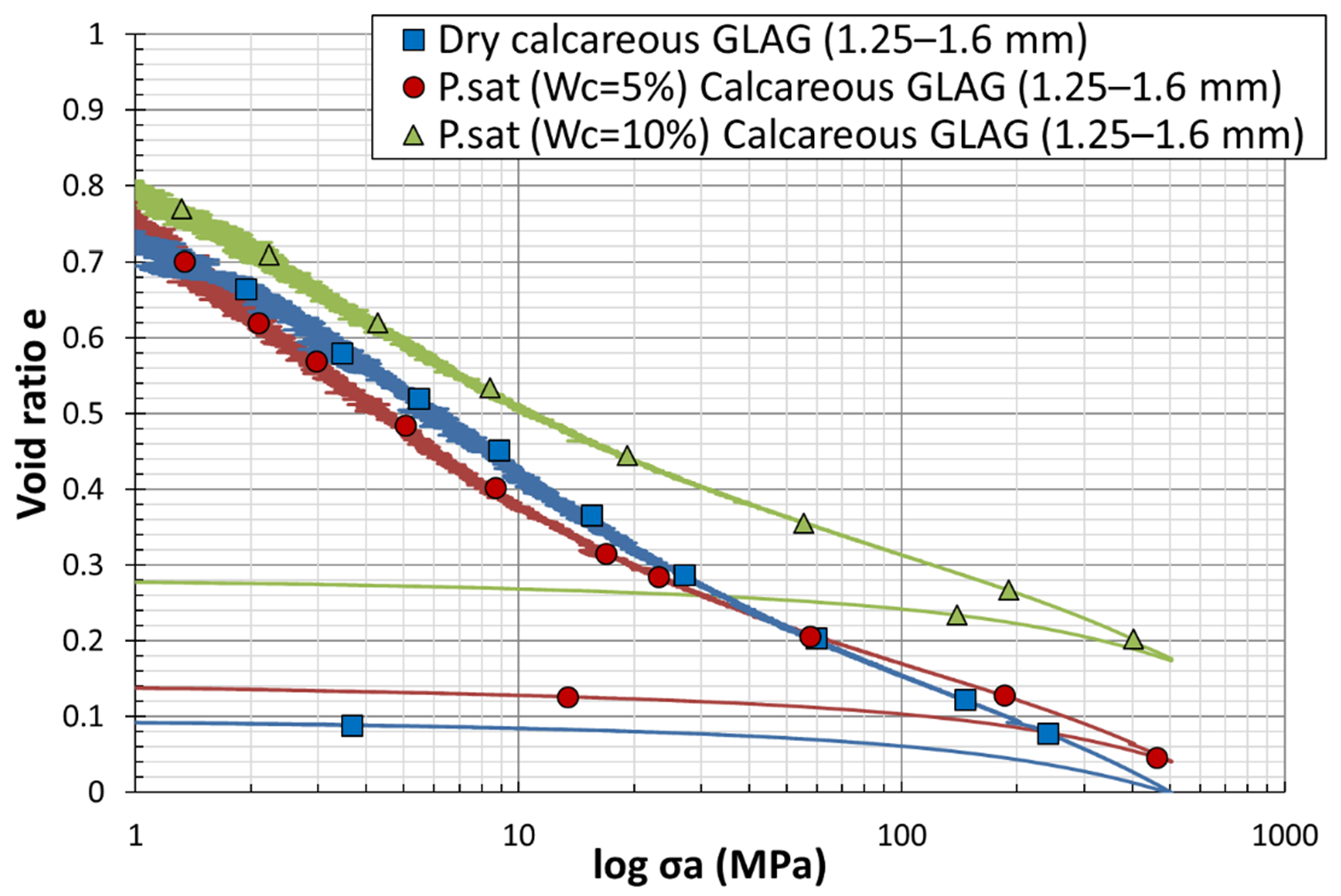
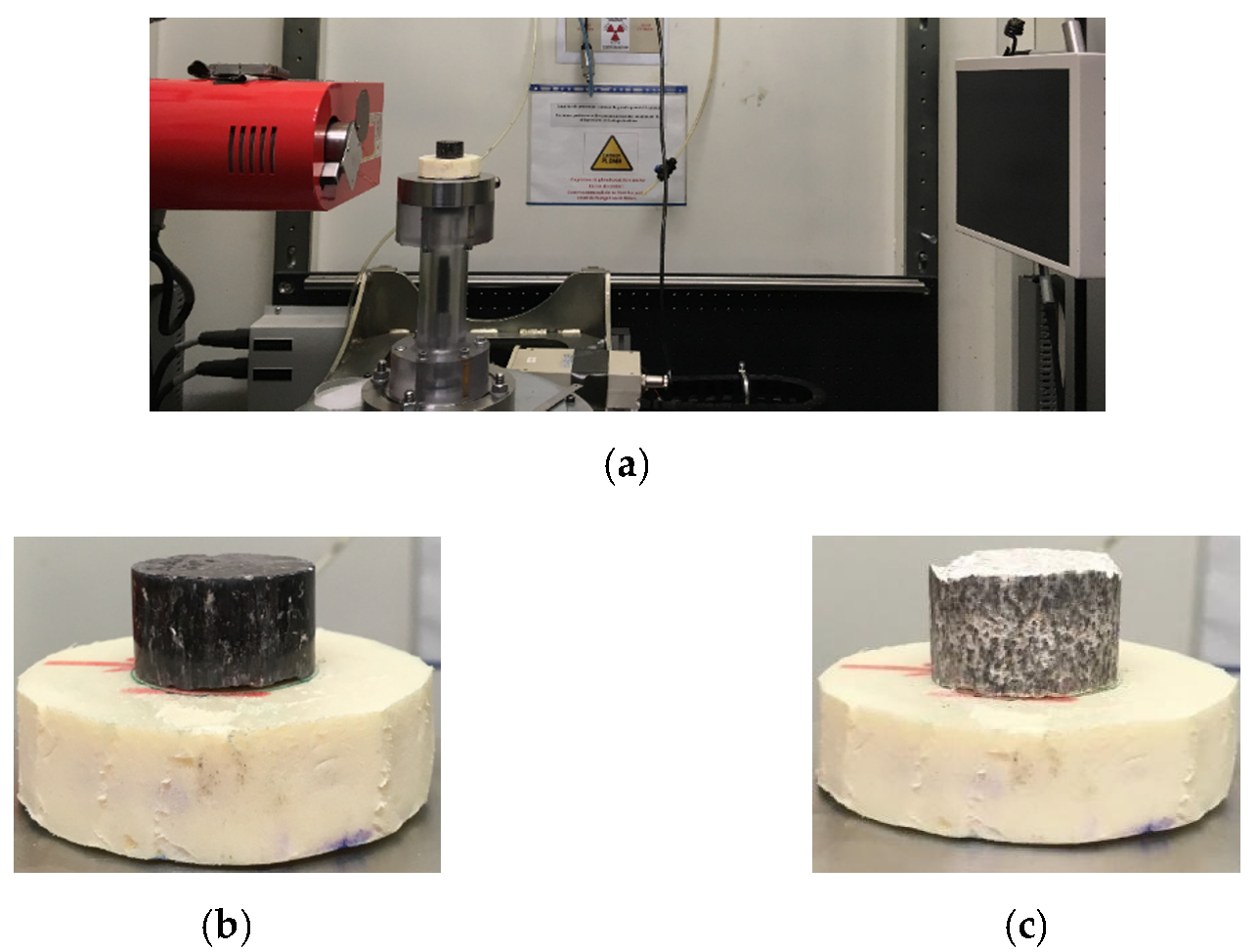

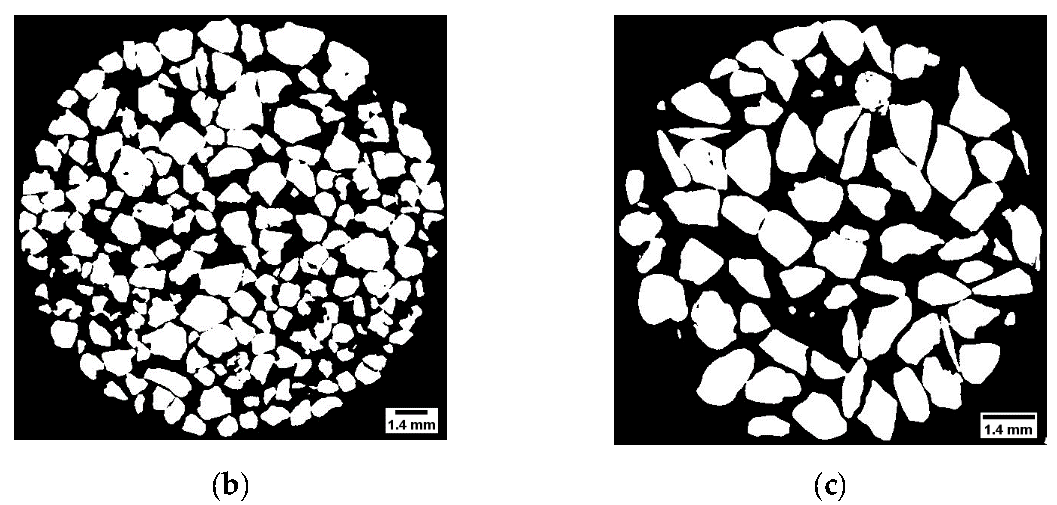

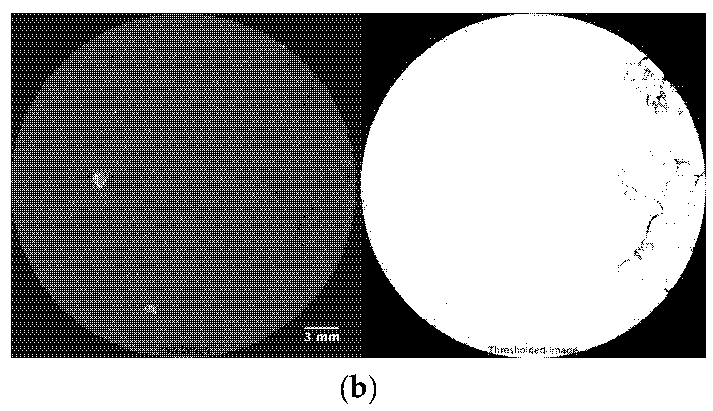
| Material | Grain Shape | ||
|---|---|---|---|
| Hostun sand HN31 | Sub-angular | 0.328 | 2.65 |
| Hostun sand HN1.25/1.6 | Sub-rounded | 1.415 | 2.65 |
| Glageon sand GLAG1.25/1.6 | Angular | 1.425 | 2.54 |
| Test Name | Dry Mass (g) | ||||||||
|---|---|---|---|---|---|---|---|---|---|
| HN-S-0 | 0 | 0.328 | 31.9 | 21.81 | 1.461 | 1.461 | 0.813 | 45 | 0.00 |
| HN-L-0 | 0 | 1.415 | 34.3 | 21.79 | 1.574 | 1.574 | 0.684 | 41 | 0.00 |
| GLAG-L-0#1 | 0 | 1.425 | 32.8 | 21.71 | 1.508 | 1.508 | 0.757 | 43 | 0.00 |
| GLAG-L-0#2 | 0 | 1.425 | 32.3 | 21.69 | 1.489 | 1.489 | 0.779 | 44 | 0.00 |
| GLAG-L-5 | 5 | 1.425 | 32.8 | 21.76 | 1.506 | 1.585 | 0.759 | 43 | 18.36 |
| HN-L-5 | 5 | 1.415 | 34.5 | 21.78 | 1.582 | 1.665 | 0.675 | 40 | 20.65 |
| GLAG-L-10 | 10 | 1.425 | 32.6 | 21.73 | 1.501 | 1.667 | 0.766 | 43 | 38.45 |
| HN-L-10 | 10 | 1.415 | 34.2 | 21.69 | 1.578 | 1.753 | 0.679 | 40 | 43.34 |
| Test Name | Mass (g) | |||||||
|---|---|---|---|---|---|---|---|---|
| HN-S-0 | 0 | 0 | 31.87 | 30.9 − 19.4 = 11.5 | 340 | 507 | 6.9 × 10−4 | 144 |
| HN-L-0 | 0 | 0 | 34.29 | 30.9 – 20.0 = 10.9 | 342 | 510 | 7.1 × 10−4 | 141 |
| GLAG-L-0#1 | 0 | 0 | 32.74 | 30.7 − 16.3 = 14.4 | 341 | 508 | 6.0 × 10−4 | 145 |
| GLAG-L-0#2 | 0 | 0 | 32.31 | 30.7 − 16.6 = 14.1 | 341 | 509 | 5.9 × 10−4 | 148 |
| GLAG-L-5 | 5 | 18.4 | 34.49 | 30.8 − 15.0 = 15.8 | 340 | 507 | 4.8 × 10−4 | 136 |
| HN-L-5 | 5 | 20.6 | 36.26 | 30.8 − 19.6 = 11.2 | 340 | 506 | 6.5 × 10−4 | 133 |
| GLAG-L-10 | 10 | 38.4 | 36.24 | 30.8 − 15.5 = 15.3 | 340 | 507 | 6.2 × 10−4 | 167 |
| HN-L-10 | 10 | 43.3 | 38.02 | 30.7 − 18.8 = 11.9 | 340 | 506 | 6.1 × 10−4 | 132 |
Publisher’s Note: MDPI stays neutral with regard to jurisdictional claims in published maps and institutional affiliations. |
© 2022 by the authors. Licensee MDPI, Basel, Switzerland. This article is an open access article distributed under the terms and conditions of the Creative Commons Attribution (CC BY) license (https://creativecommons.org/licenses/by/4.0/).
Share and Cite
Youssef, S.; Accary, A.; Dano, C.; Malecot, Y. Experimental Investigation of Sand Subjected to High Stress Levels in Wet and Dry Conditions. Materials 2022, 15, 6775. https://doi.org/10.3390/ma15196775
Youssef S, Accary A, Dano C, Malecot Y. Experimental Investigation of Sand Subjected to High Stress Levels in Wet and Dry Conditions. Materials. 2022; 15(19):6775. https://doi.org/10.3390/ma15196775
Chicago/Turabian StyleYoussef, Shadi, Abdallah Accary, Christophe Dano, and Yann Malecot. 2022. "Experimental Investigation of Sand Subjected to High Stress Levels in Wet and Dry Conditions" Materials 15, no. 19: 6775. https://doi.org/10.3390/ma15196775
APA StyleYoussef, S., Accary, A., Dano, C., & Malecot, Y. (2022). Experimental Investigation of Sand Subjected to High Stress Levels in Wet and Dry Conditions. Materials, 15(19), 6775. https://doi.org/10.3390/ma15196775








